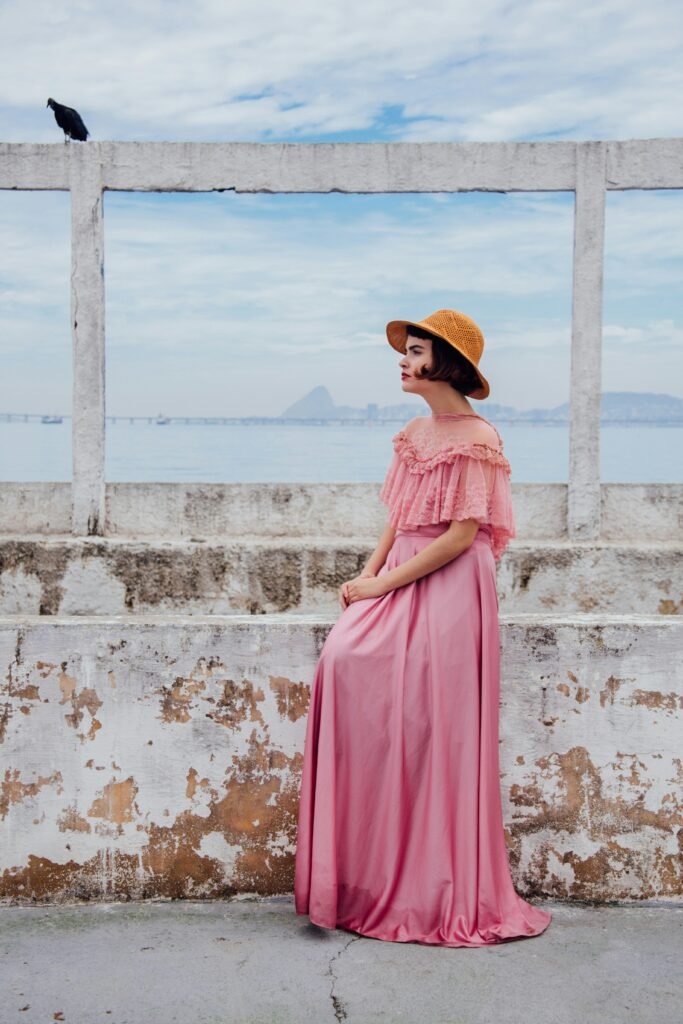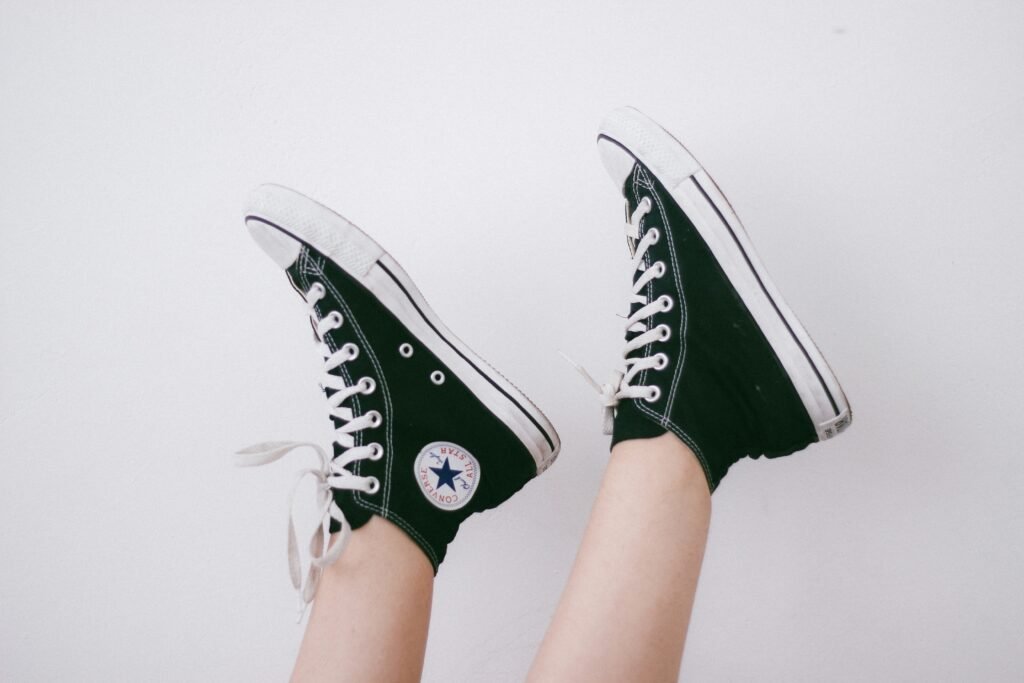When it comes to finding the perfect wallet, it’s not just about practicality, but also the uniqueness and craftsmanship of its design. In this article, you’ll discover the importance of evaluating these aspects when selecting a wallet that not only holds your essentials but also adds a touch of personal style. From exquisite hand-stitching to innovative materials, explore how the artistry behind wallet designs can elevate your everyday accessory into a statement piece. Let’s delve into the fascinating world of wallet craftsmanship and uncover the key factors to consider when evaluating the uniqueness of these tiny masterpieces.

This image is property of images.unsplash.com.
Materials Used in Wallet Designs
Leather
Leather is one of the most popular materials used in wallet designs. It is a classic choice that exudes elegance and sophistication. Genuine leather wallets are often made from cowhide or lambskin, which are known for their durability and softness. The natural character of leather adds a touch of luxury to any wallet design, making it a timeless option.
Synthetic materials
Synthetic materials, such as faux leather or vegan leather, have gained popularity in recent years. These materials offer a cruelty-free alternative to traditional leather wallets, appealing to those who prioritize ethical fashion. Synthetic materials can mimic the look and feel of real leather, providing a wide range of design options while maintaining affordability.
Fabric
Fabric wallets offer a lightweight and casual alternative to leather. Common fabrics used in wallet designs include canvas, nylon, and polyester. These materials are often selected for their durability and resistance to wear and tear. Fabric wallets are a popular choice for those who prioritize functionality and a more casual aesthetic.
Metal
Metal wallets make a bold statement with their sleek and modern designs. Often made from aluminum or titanium, these wallets are extremely durable and provide excellent protection for your cards and cash. Metal wallets are known for their minimalist designs and can be an excellent choice for those seeking a unique and contemporary look.
Exotic materials
For those looking for a truly distinctive wallet, there are options made from exotic materials. Some examples include wallets made from ostrich leather, snakeskin, or even reclaimed materials like recycled firehose. These wallets make a bold statement and offer a truly unique aesthetic for those who want to stand out from the crowd.
Construction Techniques
Hand-stitched
Hand-stitching is a labor-intensive technique that requires skilled craftsmanship. Wallets crafted with this technique often showcase the artisan’s attention to detail and precision. Hand-stitched wallets are known for their durability and longevity, as the stitching is often stronger and more resistant to wear and tear compared to machine-stitched or bonded wallets.
Machine-stitched
Machine stitching is a more efficient method of constructing wallets that still yields durability and quality. The use of specialized sewing machines ensures consistent stitching and allows for faster production. Machine-stitched wallets offer a balance between affordability and craftsmanship, making them a popular choice for many.
Bonded
Bonded wallets are constructed by bonding or gluing layers of material together. This technique creates a seamless and clean look, without the need for visible stitching. Bonded wallets are often lightweight and flexible, making them a convenient option for those seeking a slim and minimalist design.
Molded
Molded wallets are created by shaping materials, such as synthetic or leather, using molds or presses. This technique allows for the creation of wallets with unique shapes and structures. Molded wallets often have a smooth and streamlined look, highlighting the materials’ natural characteristics.
Folded and glued
Folded and glued wallets are constructed by folding a single piece of material and securing it with adhesive. This technique is commonly seen in fabric or synthetic material wallets. It provides a simple and cost-effective construction method while still offering durability and functionality.

This image is property of images.unsplash.com.
Style and Aesthetics
Minimalist designs
Minimalist wallets focus on simplicity and functionality, often featuring clean lines and a slim profile. These designs prioritize efficient use of space, with card slots and compartments carefully organized to minimize bulk. Minimalist wallets are perfect for those who prefer a sleek and uncluttered look.
Vintage-inspired
Vintage-inspired wallets draw inspiration from classic designs of the past. These wallets often feature details such as distressed leather, retro hardware, and traditional closures. Vintage-inspired wallets capture a sense of nostalgia and offer a timeless appeal for those who appreciate a touch of history in their accessories.
Contemporary
Contemporary wallets embrace modern aesthetics and often incorporate innovative design elements. These wallets may feature unconventional shapes, asymmetrical details, or unique closure systems. Contemporary designs are constantly evolving, reflecting current fashion trends and pushing boundaries.
Embellished
Embellished wallets add a touch of glamour and personality to a design. These wallets may be adorned with decorative stitching, embroidery, or metal accents. Embellishments can be subtle or bold, allowing the wallet to stand out as a statement accessory.
Patterned
Patterned wallets offer an opportunity to showcase individuality and personal style. From bold geometric prints to delicate floral motifs, there is a wide range of patterns available. Patterned wallets add visual interest and can be a fun way to express creativity through accessories.
Functionality and Features
Card slots and compartments
The number and arrangement of card slots and compartments are important considerations for wallet functionality. A well-designed wallet should offer enough space to hold essential cards, such as credit cards, ID cards, and membership cards, while keeping them organized and easily accessible.
ID window
Wallets with ID windows provide a convenient and secure way to display identification cards, such as driver’s licenses or work IDs. This feature eliminates the need to remove the ID from the wallet, saving time and reducing the risk of misplacing important cards.
Coin pocket
A coin pocket is a practical feature for those who often handle loose change. This compartment keeps coins separate from bills and cards, preventing them from getting lost or damaging other contents of the wallet.
Money clip
A money clip is a useful addition for those who prefer to carry cash. This feature securely holds bills in place, eliminating the need for a separate cash compartment. Money clips can be integrated into the wallet’s design or detachable for added convenience.
RFID blocking
In an increasingly digital world, RFID blocking technology has become essential for protecting sensitive information. RFID-blocking wallets have a special lining that helps to protect credit cards and IDs from unauthorized scanning and identity theft. This feature offers peace of mind for those concerned about digital security.

This image is property of images.unsplash.com.
Durability and Longevity
Quality of stitching
The quality of stitching directly affects the durability and longevity of a wallet. Strong and precise stitching ensures that the wallet can withstand daily use and resist fraying or unraveling over time. Careful attention to stitching details can indicate the overall quality of craftsmanship.
Strength of materials
The choice of materials greatly contributes to a wallet’s durability. Durable materials, such as genuine leather or high-quality synthetics, are essential for wallets that can withstand everyday wear and tear. The strength and thickness of the materials used directly impact the overall longevity of the wallet.
Resistance to wear and tear
A good wallet should be able to withstand the rigors of daily use without showing signs of excessive wear and tear. The materials and construction techniques used play a significant role in determining the wallet’s resistance to scratches, stains, and general deterioration.
Water resistance
Water resistance is an important consideration, especially for those living in areas prone to rain or high humidity. Wallets made from materials with water-resistant properties, such as treated leather or synthetic fabrics, offer added protection against moisture damage.
Warranty
The presence of a warranty indicates the manufacturer’s commitment to quality and customer satisfaction. A warranty gives peace of mind, knowing that the brand stands behind its products and is willing to address any possible defects or issues that may arise.
Uniqueness of Design
Innovative closure systems
Wallets with innovative closure systems set themselves apart from traditional designs. Magnetic closures, hidden snaps, or sliding mechanisms can add a touch of intrigue and functionality to a wallet. These unique features not only contribute to the overall aesthetics but also enhance the user experience.
Unconventional shapes
Wallets with unconventional shapes defy the traditional rectangular form and make a bold statement. From circular designs to geometrical abstractions, these wallets offer a distinctive and eye-catching look. Unconventional shapes can add personality and individuality to your everyday carry.
Customizable options
Personalization is increasingly sought after in wallet designs. Customizable options, such as monogramming or engraved initials, allow wallets to be tailored to individual preferences. These personalized touches make the wallet truly one-of-a-kind and can serve as a meaningful gift or a reflection of personal style.
Limited edition releases
Wallets released as limited editions are highly coveted by collectors and fashion enthusiasts. Limited edition releases often feature unique colors, materials, or decorative elements that are exclusively available for a limited period or in limited quantities. Owning a limited edition wallet adds an element of exclusivity and can become a valuable collector’s item.
Collaborations with artists/designers
Collaborations between wallet brands and renowned artists or designers can result in truly remarkable creations. These collaborations infuse new ideas, artistic flair, and fresh perspectives into wallet designs. Working with artistic talents can lead to unique and innovative designs that appeal to those seeking something truly extraordinary.
Attention to Detail
Precision in craftsmanship
Attention to detail is a hallmark of well-crafted wallets. From precise stitching to flawless edges, every aspect of the wallet should showcase the careful craftsmanship that went into its creation. Attention to detail ensures that the wallet not only looks refined but also functions flawlessly.
Hand-painted accents
Hand-painted accents add a touch of artistry and craftsmanship to a wallet. Hand-painted details can range from delicate patterns to bold brush strokes, creating a unique visual element. These small details demonstrate the brand’s commitment to creating wallets that are not just functional but also visually appealing.
Engraved logos
Engraved logos offer a subtle yet sophisticated touch to wallet designs. Instead of using printed or embossed logos, engraving creates a more permanent and high-end finish. Engraved logos showcase the brand’s commitment to craftsmanship and attention to even the smallest details.
Embossed patterns
Embossed patterns add texture and depth to a wallet’s design. Whether it’s a subtle texture or an intricate design, embossing creates a tactile experience and elevates the overall aesthetic. Well-executed embossed patterns demonstrate the brand’s commitment to creating visually compelling wallets.
High-quality hardware
The hardware used in wallet designs, such as zippers, clasps, or buckles, should be of high quality to ensure durability and functionality. Well-designed and well-crafted hardware not only enhances the overall look of the wallet but also contributes to its ease of use and longevity.
Brand Reputation
Established luxury brands
Well-established luxury brands are known for their commitment to quality, craftsmanship, and timeless design. These brands have earned their reputation through decades of delivering superior products. Choosing a wallet from an established luxury brand often ensures a high level of craftsmanship and customer satisfaction.
Emerging designers
Emerging designers often bring fresh perspectives and innovative ideas to the world of wallet design. These designers may experiment with unconventional materials, unique construction techniques, or bold aesthetic choices. Choosing a wallet from an emerging designer can offer a sense of exclusivity and the opportunity to support up-and-coming talent.
Eco-friendly brands
Eco-friendly brands prioritize sustainability and ethical practices in their manufacturing processes. These brands may use organic or recycled materials, implement fair labor standards, and minimize their environmental impact. Choosing a wallet from an eco-friendly brand allows you to make a conscious decision to support environmentally responsible practices.
Ethical production practices
Wallet brands that prioritize ethical production practices ensure fair wages and safe working conditions for their employees. They may also support community development initiatives or give back to charitable causes. Choosing a wallet from a brand that values ethical production practices aligns your purchase with your values and contributes to a better world.
Positive customer reviews
Positive customer reviews are a testament to a brand’s quality and service. By considering the experiences and opinions of other customers, you can gain valuable insights into the overall satisfaction and reliability of a brand’s wallets. Positive customer reviews indicate that the brand has delivered on its promises and has a track record of customer satisfaction.
Value for Money
Price in relation to quality
The price of a wallet should be considered in relation to its quality and craftsmanship. While higher price tags may indicate superior materials and craftsmanship, it is important to evaluate whether the wallet offers sufficient value for the investment.
Functional features for the price
A wallet’s price should also be evaluated in terms of the functional features it offers. Consider the wallet’s capacity, organization, and convenience features, and assess whether these justify the price in terms of the value they add to your daily life.
Longevity and durability considered
A wallet’s price should reflect its durability and longevity. If a wallet is made from high-quality materials and constructed with attention to detail, it is likely to stand the test of time. Evaluation of a wallet’s price should take into account its expected lifespan and the potential for long-term use.
Potential resale value
Some wallets, especially those from renowned luxury brands or limited edition releases, may have a strong resale value. Consider whether the wallet has the potential to retain or increase its value over time. This can be a factor in determining the overall value for money, especially for collectors or those who may wish to sell the wallet in the future.
Comparison with similar offerings
To assess value for money accurately, it is essential to compare the wallet with similar offerings from different brands. Consider the quality, materials, functionality, and overall design when comparing wallets. This comparison will help determine whether the wallet offers a competitive price point in the market.
Influence of Cultural and Historical References
Traditional craftsmanship techniques
Wallets that incorporate traditional craftsmanship techniques pay homage to cultural and historical practices. These techniques can include hand-weaving, embroidery, or leather tooling, among others. Incorporating traditional craftsmanship into wallet designs is a way to celebrate heritage and preserve cultural traditions.
Incorporation of cultural symbols
Cultural symbols can be a source of inspiration for wallet designs. From patterns and motifs to colors and decorative elements, these symbols infuse wallets with cultural significance and create a connection to a particular heritage. Wallets that incorporate cultural symbols allow individuals to carry a piece of their identity with them.
Inspiration from historical artifacts
Historical artifacts provide a rich source of inspiration for wallet designs. Architectural elements, ancient artworks, or traditional textiles can influence the patterns, textures, and shapes seen in wallet designs. Incorporating elements from history adds depth and a sense of storytelling to the design.
Celebration of local heritage
Wallets that celebrate local heritage draw inspiration from regional customs, traditions, or landscapes. These designs often incorporate elements specific to a particular area, such as local flora and fauna, traditional costumes, or iconic landmarks. Celebrating local heritage through wallet designs creates a connection between the individual and their surroundings.
Use of indigenous materials
The use of indigenous materials in wallet designs not only showcases the unique qualities of these materials but also supports the communities that produce them. Indigenous materials can include handwoven fabrics, sustainably harvested wood, or natural dyes. Using these materials helps preserve cultural heritage and contribute to sustainable practices.
In conclusion, evaluating the uniqueness and craftsmanship of wallet designs involves considering multiple factors. The materials used, construction techniques, style and aesthetics, functionality and features, durability and longevity, uniqueness of design, attention to detail, brand reputation, value for money, and influence of cultural and historical references all contribute to the overall evaluation. By carefully considering these aspects, you can choose a wallet that not only reflects your personal style but also meets your needs for quality and craftsmanship.
